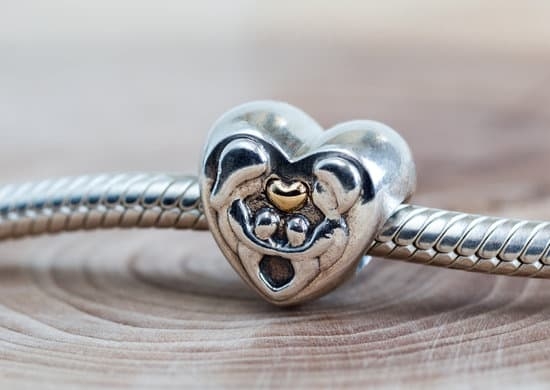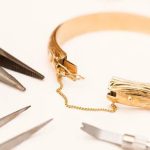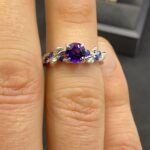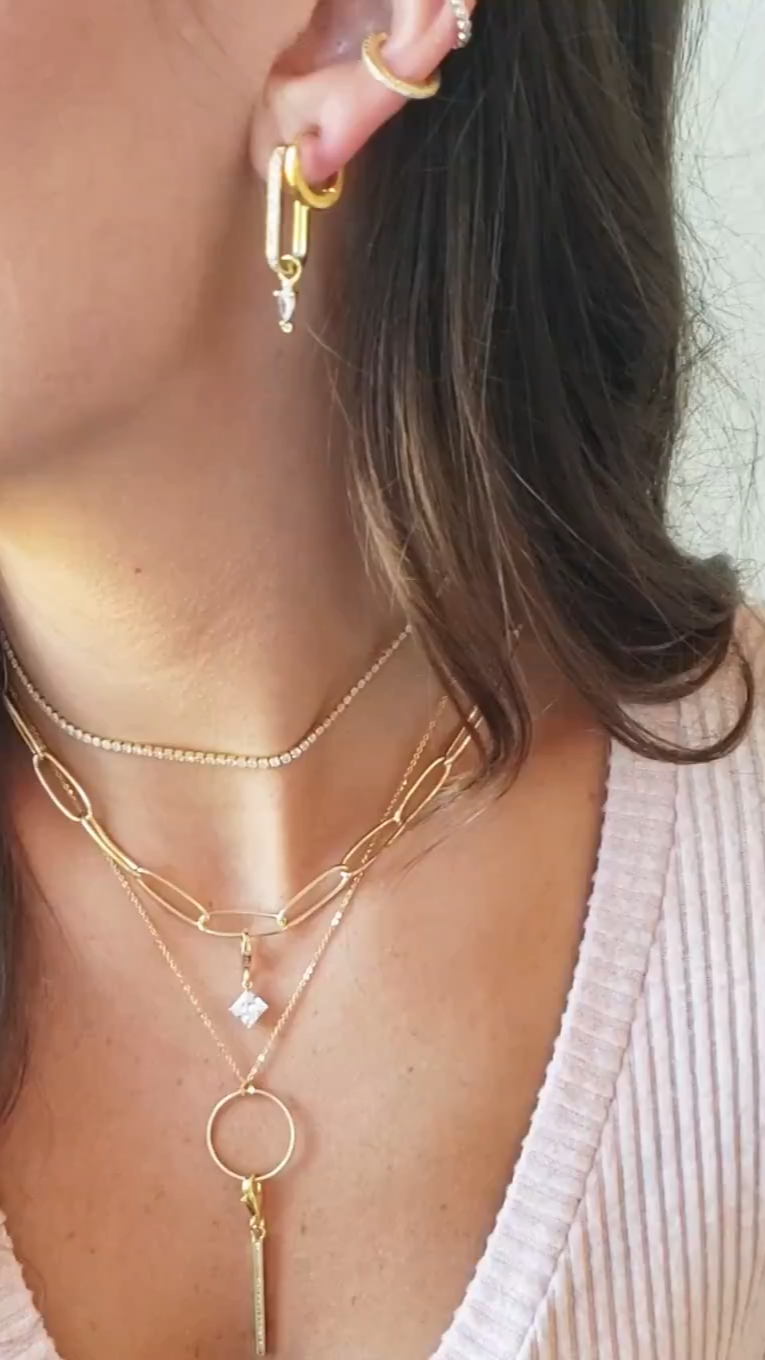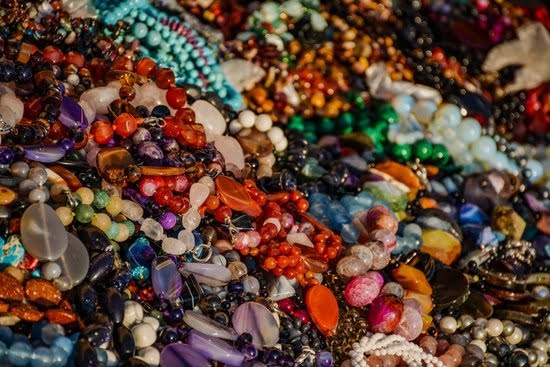Are you looking to add a new skill to your jewelry-making repertoire? Learn how to do bead embroidery jewelry and create stunning pieces that are sure to impress. From choosing the right supplies to mastering basic stitches and techniques, creating intricate designs, and finishing and securing your piece, this guide will take you through every step of the process. Whether you’re a beginner or an experienced crafter, bead embroidery jewelry offers endless possibilities for creativity and self-expression.
Bead embroidery is a traditional craft that involves stitching beads onto fabric to create decorative designs. What sets bead embroidery jewelry apart from other forms of beading is the use of fabric as a base for the beads, allowing for versatile and unique creations. In this introductory section, we’ll cover the basics of bead embroidery jewelry, including an overview of the supplies you’ll need, essential techniques, design considerations, and tips for preserving your finished pieces.
As we delve into the world of bead embroidery jewelry, we’ll explore how to select the right materials and tools for your projects. Additionally, we’ll discuss how to prepare both the fabric and beads before diving into stitching techniques.
Whether you’re interested in creating delicate floral motifs or bold geometric patterns, mastering bead embroidery opens up a world of possibilities for expressing your personal style through handmade jewelry. So let’s get started on this creative journey together.
Choosing the Right Supplies for Bead Embroidery
When it comes to choosing the right supplies for bead embroidery, there are a few key components to consider. First and foremost, you’ll need a sturdy fabric or backing material to serve as the base for your beadwork. Many bead embroidery artists prefer using materials such as felt, ultrasuede, or even stiff beading foundation for their projects.
In addition to the fabric, you’ll also need a variety of beads to bring your design to life. Seed beads, which come in various sizes and colors, are commonly used in bead embroidery. You may also want to incorporate other types of beads such as bugle beads, crystals, or pearls for added texture and dimension.
Aside from these basic supplies, you’ll need a few specialized tools for bead embroidery. A good pair of sharp scissors is essential for cutting thread and trimming excess fabric. Beading needles, which are much thinner and more flexible than regular sewing needles, are also a must-have for bead embroidery projects.
| Bead Type | Usage |
|---|---|
| Seed Beads | Main component for intricate patterns and designs |
| Bugle Beads | Used for adding length and dimension to the beadwork |
| Crystals | Adds sparkle and shine to the jewelry piece |
| Pearls | Creates an elegant and classic touch to the design |
Once you have gathered all these supplies, you’ll be well on your way to creating stunning bead embroidered jewelry pieces. The right combination of fabric, beads, and tools will set the foundation for bringing your creative vision to life.
Preparing the Fabric and Beads
When it comes to creating beautiful bead embroidery jewelry, the preparation of your fabric and beads is crucial to the success of your project. Before you start stitching, it’s important to ensure that your materials are well-prepared and ready to use. This section will provide you with essential tips on how to prepare your fabric and beads for bead embroidery.
Preparing the Fabric
The first step in bead embroidery is preparing the fabric on which you will be working. It’s important to choose a sturdy fabric that can withstand the weight of the beads and the stitching process. Many bead embroiderers prefer to use velvet, ultrasuede, or cotton twill as their base fabric. Before you start, make sure to hoop your fabric tightly so that it remains stable throughout the embroidery process.
Preparing the Beads
Selecting the right beads for your bead embroidery project is essential. Take some time to sort through your beads and remove any damaged or misshapen ones. Additionally, consider organizing your beads by color, size, or type in order to easily access them during the embroidery process. It’s also helpful to pre-string some of your beads onto a separate thread or needle in order to speed up the stitching process later on.
Cleaning and Prepping
Before starting your bead embroidery project, take a moment to clean and prep both your fabric and beads. Remove any dust or debris from the fabric using a lint roller or gentle brush. For the beads, wipe them down with a soft cloth or damp towel if needed.
Ensuring that both your fabric and beads are clean will result in a more professional-looking finished piece. Taking these preparatory steps will set you up for success as you begin working on your bead embroidery jewelry masterpiece.
Basic Bead Embroidery Stitches and Techniques
Bead embroidery jewelry is a beautiful and intricate art form that can be enjoyed by crafters of all skill levels. In this section, we will explore some basic bead embroidery stitches and techniques to help you get started on your own stunning jewelry designs.
One of the most fundamental stitches in bead embroidery is the backstitch. This stitch is created by sewing one bead at a time, then sewing back through the previous bead to secure it in place. The backstitch can be used to create outlines, fill in shapes, and add texture to your designs.
Another essential stitch in bead embroidery is the seed bead couching technique. This technique involves using a thread to couch or secure larger beads onto the fabric surface. Seed bead couching allows for greater flexibility in design and adds dimension to your jewelry pieces.
When creating bead embroidery jewelry, it’s also important to consider techniques for adding embellishments such as fringe, loops, and picots. These decorative elements can enhance the overall look of your design and give it a unique flair.
Incorporating these basic bead embroidery stitches and techniques into your jewelry-making process will allow you to create beautiful, one-of-a-kind pieces that showcase your creativity and attention to detail.
| Bead Embroidery Stitch | Technique |
|---|---|
| Backstitch | Creating outlines, filling in shapes, adding texture |
| Seed Bead Couching | Securing larger beads onto fabric surface for added dimension |
| Embellishments (fringe, loops, picots) | Enhancing overall design with decorative elements |
Designing Your Bead Embroidery Jewelry
Choosing a Design
When it comes to designing your bead embroidery jewelry, the possibilities are endless. You can draw inspiration from nature, culture, or even create your own abstract designs. Before starting, consider the style you want to achieve – elegant and classic, funky and colorful, or bohemian and free-spirited. Once you have a design in mind, sketch it out on paper to serve as a guide when you start beading.
Color Selection
One of the most important aspects of designing bead embroidery jewelry is choosing the right color palette. Consider the mood or theme of your design and select colors that complement each other. You can also choose different shades and hues to create depth and dimension in your piece. Don’t be afraid to experiment with bold and unexpected color combinations to make your bead embroidery jewelry stand out.
Incorporating Elements
To add character and uniqueness to your bead embroidery jewelry, consider incorporating various elements such as charms, pendants, cabochons, or even small pieces of fabric. These elements can serve as focal points in your design or bring additional texture and interest to your piece. Experiment with different placements and combinations until you achieve a look that reflects your personal style.
By following these tips for designing bead embroidery jewelry, you can create stunning pieces that showcase your creativity and craftsmanship. Remember that practice makes perfect, so don’t be afraid to experiment with different techniques and designs until you find what works best for you. With patience and dedication, you’ll soon be able to create beautiful bead embroidery jewelry that will be admired by all who see it.
Tips for Layering and Dimension in Bead Embroidery
Bead embroidery jewelry is a beautiful and intricate art form that allows for endless creativity. One of the key aspects to creating stunning bead embroidery jewelry is mastering the technique of layering and adding dimension to your pieces. Here are some tips to help you achieve this:
- Use different sizes and shapes of beads: By incorporating beads of varying sizes and shapes, you can create texture and depth in your bead embroidery designs. Experiment with seed beads, bugle beads, gemstone beads, and more to add visual interest to your pieces.
- Utilize different embroidery stitches: Explore different embroidery stitches such as the backstitch, couching, or French knots to add dimension to your beadwork. By incorporating a variety of stitches, you can create raised areas, curves, and patterns within your designs.
- Layering techniques: Consider layering different beadwork elements such as cabochons, crystals, or fabric underneath your bead embroidery to create a three-dimensional effect. This can add depth and complexity to your jewelry pieces.
Mastering the art of layering and adding dimension in bead embroidery requires practice and experimentation. Don’t be afraid to play around with different materials, colors, and textures until you find the perfect combination for your design.
By following these tips, you can elevate your bead embroidery jewelry pieces from flat designs to stunning works of art that truly stand out.
Overall, learning how to do bead embroidery jewelry is a journey that involves lots of trial-and-error but by mastering the techniques mentioned above you can take your creations to the next level.
Finishing and Securing Your Bead Embroidery Piece
After putting in hours of work into creating a beautiful bead embroidery jewelry piece, it’s important to properly finish and secure it to ensure its longevity. One of the most common ways to do so is by backing the embroidered piece with ultrasuede or another fabric meant for backing beadwork. This not only provides a seamless finishing touch but also adds durability to the jewelry piece.
To secure the bead embroidery, use a strong adhesive such as E6000 to attach the ultrasuede backing to the embroidered piece. Trim any excess fabric carefully, ensuring that it doesn’t show from the front of the jewelry. If you prefer a more traditional approach, you can also stitch the ultrasuede backing onto the embroidery using a beading needle and thread. This method may take longer, but it provides a secure and professional finish.
After securing the ultrasuede or backing fabric, consider adding edging or binding to further protect your bead embroidery jewelry. This can be done using seed beads, bugle beads, or other decorative elements that complement your design.
The edging not only adds a polished look but also helps prevent fraying or damage to the edges of your jewelry piece. By taking these steps, you can ensure that your bead embroidery jewelry will withstand everyday wear and remain in pristine condition for years to come.
Inspiration for Bead Embroidery Jewelry Designs
When it comes to creating bead embroidery jewelry, there are endless sources of inspiration for your designs. Whether you’re drawing from nature, architecture, or even art movements, there are countless ways to approach your bead embroidery projects. Here are some ideas to help spark your creativity:
- Nature-Inspired Designs: Take a walk outside and observe the patterns, colors, and textures found in nature. You can draw inspiration from flowers, leaves, and even animal prints to create unique bead embroidery designs.
- Cultural Influences: Consider incorporating elements from different cultures into your bead embroidery jewelry. Whether it’s the intricate patterns of Indian saris or the bold motifs of African textiles, there’s a wealth of inspiration to be found in traditional clothing and artwork.
- Art Movements: Look to different art movements such as Art Deco, Abstract Expressionism, or Surrealism for inspiration. You can translate the aesthetic principles of these movements into your bead embroidery designs through color choice, shape repetition, and texture.
In addition to these sources of inspiration, you can also take cues from your favorite materials themselves. Sometimes simply browsing through different types of beads or fabrics can lead you down creative paths that you hadn’t considered before.
Ultimately, the key to finding inspiration for bead embroidery jewelry designs is to keep an open mind and be willing to experiment with different ideas. Once you’ve gathered some initial inspiration from various sources, it’s time to let your creativity flow as you bring those ideas to life through bead embroidery techniques.
How to Care for and Store Bead Embroidery Jewelry
In conclusion, bead embroidery jewelry is a beautiful and creative way to express your personal style. By following the steps outlined in this article, you can create stunning pieces that showcase your talent and flair for design. From choosing the right supplies to experimenting with different stitches and techniques, there are endless possibilities for creating unique and eye-catching jewelry.
One of the most important aspects of bead embroidery jewelry is properly caring for and storing your finished pieces. To ensure that your creations stand the test of time, it’s essential to handle them with care and store them appropriately. By following these guidelines, you can enjoy your bead embroidery jewelry for years to come.
In addition to preserving the beauty of your bead embroidery jewelry, proper care and storage also help protect the delicate materials used in their creation. Whether you have created a dainty pendant or a statement necklace, taking the time to care for and store your pieces will ensure that they remain in pristine condition. With these tips in mind, you can continue to explore the art of bead embroidery jewelry with confidence and creativity.
Frequently Asked Questions
How to Do Bead Embroidery Step by Step?
Bead embroidery involves stitching beads onto fabric to create decorative designs. To start, gather your materials including fabric, beads, embroidery needles, and thread. Then, sketch your design on the fabric and begin stitching the beads onto it using backstitch or other suitable embroidery stitches.
How Do You Secure Bead Embroidery?
Securing bead embroidery involves several techniques to ensure the beads stay in place. One method is to use a beading foundation, such as ultrasuede or stiff interfacing, to provide stability for the beads. Additionally, closely spaced seed beads can secure larger accent beads in place by stitching through them multiple times.
What Beads Do You Use for Bead Embroidery?
Different types of beads can be used for bead embroidery, depending on the desired look and texture of the finished piece. Seed beads are commonly used due to their small size and versatility in creating intricate designs. Other popular options include cylinder beads, bugle beads, and larger accent beads like crystals or gemstones for added dimension and visual interest.

Welcome to my jewelry blog! My name is Sarah and I am the owner of this blog.
I love making jewelry and sharing my creations with others.
So whether you’re someone who loves wearing jewelry yourself or simply enjoys learning about it, be sure to check out my blog for insightful posts on everything related to this exciting topic!

